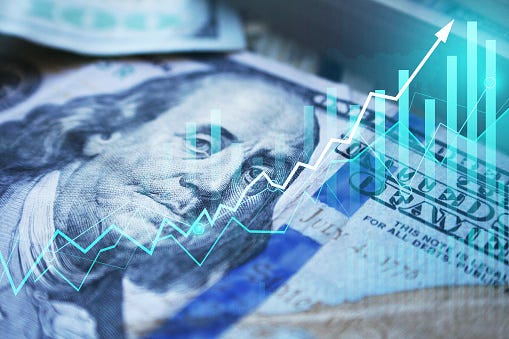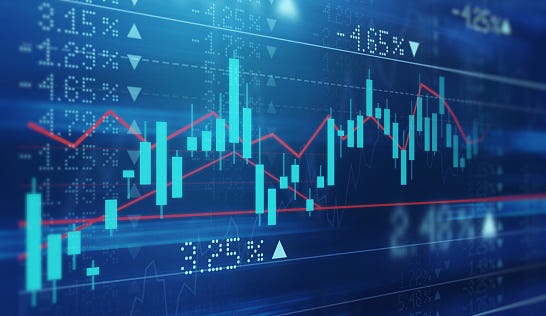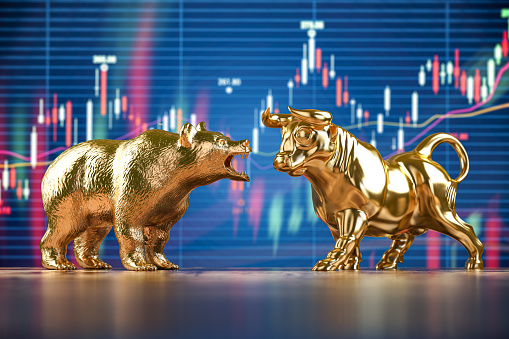Two straight years of double-digit negative returns aren’t unheard of however pretty rare given the U.S. economy, corporations, and consumers alike have gained tremendous economic and financial strength since the outbreak of the pandemic.
Millions of Americans state they are in the best financial position of their lives thanks to aggressive savings rates, massive monetary and fiscal stimulus support, investment prowess, WFH, and other tailwinds from 2020–2021 that propelled them back on their feet.
Although 4Q ’22 earnings may not blow out of the water as Big Tech, financials, and even energy grapple with soaring borrowing rates and lingering effects from supply chain shocks, there are still countless positives to look out for in 2023 including an anticipated January rally, also known as the January Effect on our minds!
The Santa Clause rally may have been a disappointment but that doesn’t mean our candles should be blown out early! Instead, they should light up due to anticipation of a fresh new start and resolutions set. Although most things don’t change rolling into a new year, our personalities, perceptions, and expectations do which can make all the difference when needing to make a real change in the world.
It’s all mental after all!
If big-time institutional investors with large holdings are convinced the markets will go up, or at least wish for them to, they will start buying and retail investors will rush to get in on the action. This is what caused choppy waters throughout Q3-Q4 of ’22 when upbeat October inflationary news sent markets soaring which in hindsight signaled greater Fed hikes in the foreseeable future to cool down all spending!

What The January Effect Means For Your Position
Although 2023 may feel no different than 2022, it doesn’t have to, especially if you have extra cash to deploy and have a long-term horizon like the most of us. If you aren’t planning on retiring tomorrow or within the next few years, this is by far the most opportune time to take advantage of bargain-basement deals, even in real estate during the winter months, that certainly won’t last forever.
As Big Tech craters due to higher borrowing costs eating into profits that trade on lofty valuations with double-digit multiples & EV through the roof, tapping into companies that you normally may not have been able to get a slice of the pie from is advantageous. You can even eat it too; just make sure not to sabotage your new year’s goals!
Just like investors, markets aren’t that rational after all. Companies are based on future expectations, trading in future time. There’s irrational thinking that goes on all the time everywhere all at once since we are only anticipating, hoping, pontificating, and guessing wildly when none us of us really knows where the market is headed next!
Even high-paying strategists, economists and traders design EOY estimates to only find out the S&P went the opposite direction. However, this doesn’t mean it’s not important to plan ahead. Making a game plan and hoping for the best, planning for the worst is in your best interest. At this point, the January Effect just like the September Effect and Santa Clause rally still can exist if you believe it!

New Year Factors
What makes the January Effect stand out is that it works more in our favor than say during September after summer vacation when traders are pessimistic about the rest of the year ahead or even during the Santa Clause rally taken place during the last few trading days of the year when no one wants to keep track of anything, let alone their diminishing portfolio in 2022.
That’s a January thing. Now as our resolutions get made, beds get tidy, houses get cleaned, and routines get shaken up, stock prices tend to elevate due to consumer sentiment and pent-up demand, as emotion-prone irrational investors are engaging in end-of-year tax-loss harvesting and deploy their holiday cash.
If you’re unfamiliar with tax-loss harvesting, I wrote a short & sweet piece on tax-loss harvesting that won’t make your head spin. Although references to harvests and forests may get confusing, they aren’t poor ways to remember how investments grow. They flourish from a seed through DCA after all! Tax-loss harvesting is simply a strategy, a popular one taken during down years as we witnessed in 2022, when investors sell their losses to offset their capital gains tax on their gains. Taking losses is a popular move into the new year for tax purposes, our largest ongoing liability.
When engaging in tax-loss harvesting, stocks actually fall unlike during the January Effect when they are poised to rise so locking in losses prior to gains is most advantageous.
At this time, above-average anticipation, likely the highest it’ll be in the entire year, is in the air and may influence investors to start investing even more as part of a new years resolution. On top of Christmas money to invest, end-of-year bonuses are handed out during this time and investors, a.k.a employees, are likely to strategically tuck it away into the markets instead of splurging on it, another reason emotions and consumer sentiment come into play when setting good habits for the new year. As a result, this drives up stock prices as investors are less likely to sell after they’ve completed their tax-loss harvesting in December.

Does January Really Set the Tone for the Year?
Just like the winner of an election, SuperBowl team win, or weather, have little to no impact on broader markets over time, the January Effect hasn’t historically set the stage for how markets will perform for the rest of the year either.
If stocks rise and claw back losses from previous months, that’ll certainly bring upbeat sentiment and buying power to investors, but probably won’t last as long as we’d hope, especially if the Fed has alternative plans in mind to hike the FFR further to over 5% to set inflation towards its target rate of 2%.
As a result, that’s why never fighting the Fed nor relying on any institution or single investment to keep you afloat is key. Although good news of lower inflation and bad news of slower wage growth conflict, the Fed needs to navigate these waters and still is on track to raise unemployment, slow wage and job growth altogether in order to prevent a recession. Is your head spinning yet?
Whether Powell will be able to pull that off is still in the works but for now, what we do know is like with any anomaly, the January Effect (kinda) exists and is certainly a nice way to kick off the new year if it does come around! We would appreciate it!

Why The January Effect Shouldn’t Really Matter
Ideally, whether the markets are soaring or plummeting, if your emotions and level of comfort as part of your lifestyle stays the same, then you know you are truly financially free and flexible.
This is where true wealth and riches come into play when you have full autonomy over your well-being and enough control to weather any storm no matter where your investments end up since most headaches are mental after all. As investors, especially the more novice, we tend to forget, the broader markets do go up over time if you actually stick to some plan. You don’t have to be right about where the S&P fall by Dec 2023, but making some estimated guess is good enough. Being good enough in life is fine too!
No matter if markets go up or down by the end of January, consistently buying into the dips, preferably before the January Effect ends up happening, if ever, is most prudent on your wallet and savings over time to ultimately increase purchasing power.
Time in the markets matters more than timing the markets, something we tend to miss when January comes around. This is more important than ever to consider as previous January Effects have added little value in the larger picture, particularly for large caps that take up a sizable chunk of investor’s portfolio and investment strategy. Don’t count on one event, announcement, or temporary decision in time to propel your net worth. That’s too risky and not enough in your control to time it correctly.

